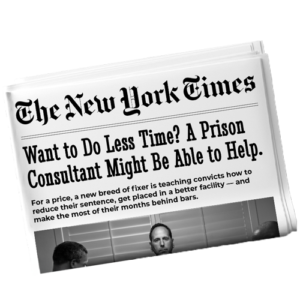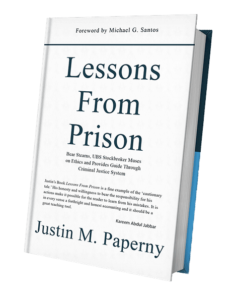Most people don’t prepare for sentencing the right way. They scramble. They copy what someone else did. They write what their lawyer tells them to write. Then they act surprised when the judge doesn’t buy it.
The reality is: you can influence the outcome—but not with talk. With work. Structured, documented, specific work.
That’s what these 10 assets are. They’re not marketing gimmicks or templates you throw together the week before sentencing. These are the tools I wish I had before sentencing and prison. And they’re the same tools people in our community are using—right now—to prepare with intention, advocate for themselves, and build records that lead to better outcomes.
Let’s walk through them.
1. Personal Narrative: Control the Story—Before Others Do It for You
Your narrative isn’t your résumé. It’s your truth. It’s how you explain what happened, why it happened, and how your thinking has evolved since.
But don’t write it like you’re trying to win sympathy. That’s the mistake. This isn’t a writing contest. It’s a credibility test. You’re trying to show that you understand the harm, and you’re not just sorry you got caught.
When done well, this document becomes the anchor for everything else: the probation report, the sentence recommendation, even future prison placement.
2. Release Plan: Show What Comes Next, Not Just What You Regret
Judges and probation officers want to know what you’re going to do differently. Not what you hope to do. What’s already in motion.
A solid release plan answers real questions:
Where will you live? How will you support yourself? What will keep you from repeating old patterns? How will you measure progress over time?
Too many people confuse optimism with planning. If your plan isn’t backed by actual steps, it won’t help you. Worse, you will look foolish.
3. Community Service: Don’t Talk About Giving Back. Prove It.
If you’ve caused harm, show that you’re trying to repair it. Not with statements—through action.
When you document meaningful, consistent community service, it becomes harder to label you as selfish or unrepentant. But this has to be more than hours on a spreadsheet. It needs purpose. Impact. And accountability from the people you’re helping.
Service isn’t a sentencing tactic. It’s a decision about how to use your time while the system watches.
4. Letters of Support: Let Others Speak—But Give Them the Right Lens
These letters help the judge see the person behind the conduct. But only if the letters are honest, specific, and grounded.
The best letters don’t try to erase what happened. They acknowledge it—and show how the person writing the letter has seen change over time. They reinforce the narrative. They support the release plan. And they come from people with something at stake.
Avoid quantity for the sake of it. Twenty recycled letters are less effective than five that carry real weight.
5. Mitigation Video: Stop Hiding Behind the Lawyer
A video can bring your message to life. It’s you, in your own voice, explaining what happened and how you’re addressing it.
When someone at the BOP or in the judge’s chambers can see your face, hear your words, and sense that you’re not reading a script—that has power.
But this isn’t about production value. It’s not about background music or editing. It’s about whether you’re willing to speak plainly, directly, and without posturing.
6. BOP Programming Plan: You’ll Either Waste Time or Use It
The Bureau of Prisons is watching how you prepare to serve your time. Case managers will ask you what your plan is. So will your probation officer. So will your judge—sometimes in open court.
If you want to take RDAP, say so—and show that you qualify. If you’re planning to work, take classes, or build something while inside, write it down.
But don’t say you’ll “make the most of your time.” That phrase means nothing. Tell us what you’re doing, where, and why.
7. Financial Restitution: You Don’t Need Millions to Show You Care
If you owe restitution, waiting until sentencing to address it is a mistake. Judges remember who ignored the issue—and who did what they could, when they could.
Some people start with $100 a month. Others get creative—offering assets that can be liquidated. The point is to take action that shows you understand the financial consequences of your conduct.
Empty promises about future repayment won’t move anyone. Even a small effort today means more than a grand plan that never materializes.
8. Compassionate Release Strategy: Start Building the Record Now
Most people don’t think about compassionate release until they’re in trouble—sick, aging, or stuck. That’s too late.
What matters is the documented record. If you ever need to ask for early release, you’ll need proof that you’ve been preparing, contributing, and growing since day one.
We’ve seen judges grant release to people who had no special health issues—just a long paper trail of discipline, contribution, and rehabilitation. Start that trail now.
9. Prison Professor Talent Profile: Stop Telling, Start Showing
Your digital profile on our site is public. That means your judge, your case manager, and your probation officer can see it.
And when they do, it should tell a consistent story: here’s what I’m learning, here’s how I’m helping others, here’s what I’ve built while under scrutiny.
People who publish credible work—blogs, reflections, course content, interviews—stand out. People who publish nothing or throw up a few rushed posts before sentencing? They disappear.
10. Weekly Tracker: Progress Isn’t What You Say—It’s What You Do
We give our clients tracking templates for a reason. When you keep a weekly record—of your goals, actions, lessons, service—it becomes easier to build the other nine assets on this list.
More important, it gives your team something to work with. If we’re helping you prepare for sentencing, or for early release, or for supervised release—we need updates. Not summaries. Not vague recollections. Just consistent documentation.
If you stop after two weeks, everyone will know. If you do it right, people will notice.
Final Thought: Which Assets Are You Actually Using?
It’s easy to say you’re preparing. It’s harder to put your head down and build these ten tools with care and consistency. But the people who do that are the ones who show up to court with clarity, and peace of mind.
If you haven’t started, you’re not behind. You’re just at the point where you need to decide: am I going to build a strategy, or am I going to wing it?
You can schedule a call, join our Monday webinar, or start with one asset and build from there.
But waiting? That’s the only move that guarantees a worse outcome.
Justin Paperny




